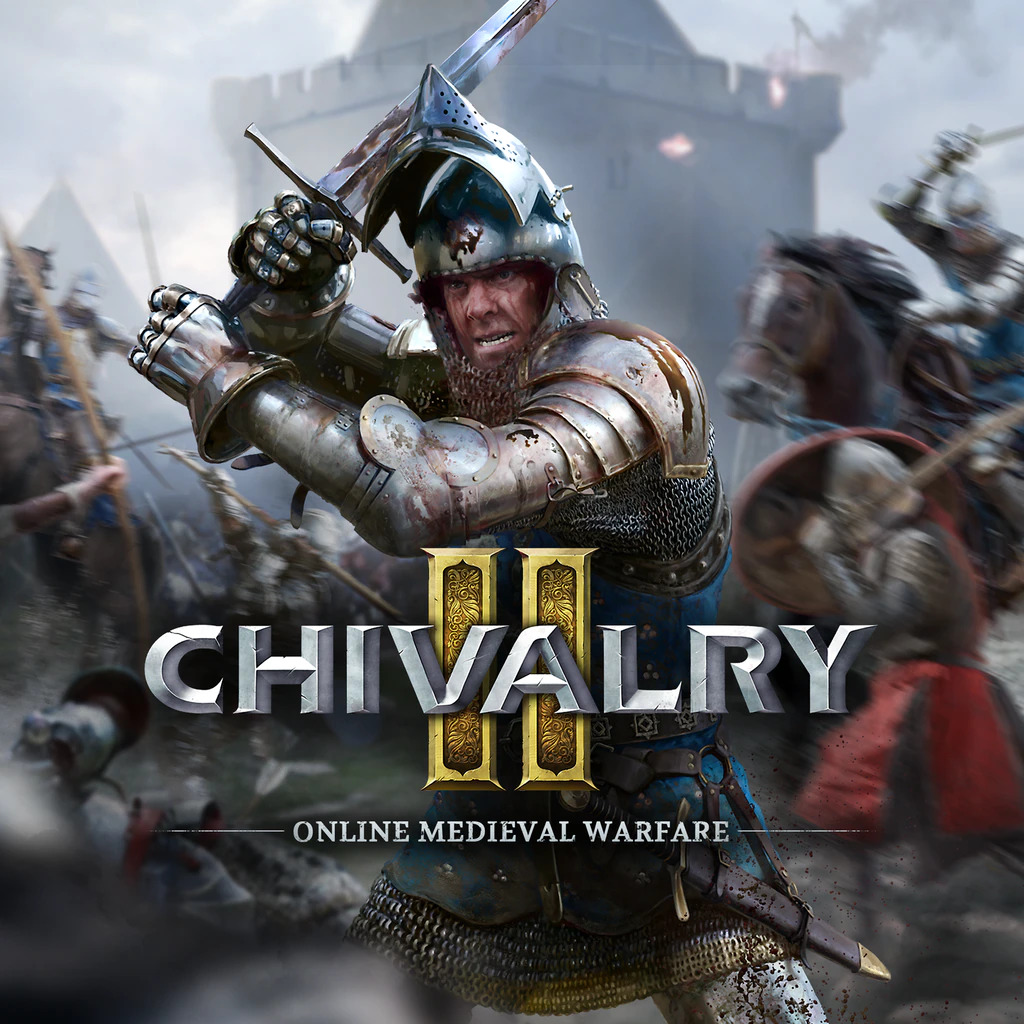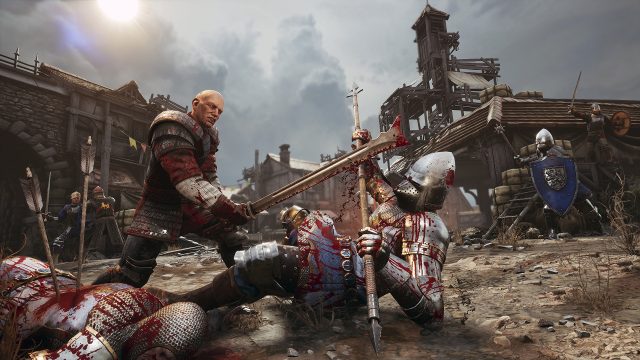
Chivalry 2 is absolute chaos, carnage, and great fun. But what seems like a chaotic smash-em up reveals a staggering level of fighting game complexity underneath which rewards those with patience and experience, but I’m not convinced on strategy.
Chivalry 2 is billed as a medieval warfare game. A large scale multiplayer-only affair, with two teams of either 20 or 32 battling it out with swords and shields. Matches range from your standard deathmatch affair (deplete the other team’s tickets to win) or objective-based modes which involve things like storming a castle or escorting a wagon to safety.
As mentioned, it’s really a multiplayer game, and whilst you can play offline vs. bots I think your mileage is going to vary here depending on how much you like playing big battle games on your own. Grab some friends though and you’re off to the races, as the combat is simple but with enough layers to ensure that the experienced ones can really flourish.
The tutorial is essential – whilst three shoulder buttons do various attacks and one blocks, what you really need to know is how to manage stamina when blocking, when to (and what is) a parry, dodging, when to riposte and dragging. Dragging is Chivalry’s skill-modifier for a better word. Essentially, when you point your cursor at something and attack, you hit it. But dragging connects where your weapon is at the relevant part of the swing with where you’re looking.
This is best illustrated with an example. So if you’re facing two or three opponents, normally you’d expect to hit one at a time. Hit the one in the middle, and if you turn at the correct time (say, face left) you will connect with the one at the right first as your weapon moves through its swinging arc. If you ‘drag’ the cursor as you’re swinging, and time it right, you’ll connect with all three. In big, multi-person battles, this technique is essential.

In practice, it can be a recipe for motion sickness. For all of the precision and skilful elements of Chivalry 2, watching someone play it can be a herky-jerky mess. Or at least seem like it. The first-person view is looking all over the place to drag weapons and adjust your block to make sure you can deflect the opponent’s drags. Plus you’re dodging in and out, side to side, it very much can give the impression of a janky first-person shooter, but this is unfair to Chivalry, and those that understand the finesse and skill of the player will be able to appreciate it.
With all this precision, it would be a shame if you couldn’t brutally decapitate your opponent. Thankfully, you can. Not only that, heads, arms, legs – any appendage really can be severed. It’s not the end though, once downed, if you can survive being finished, you can get back up and carry on. Doesn’t matter if you’ve lost your shield, sword, or even an arm, you can keep going. Obviously, if you’re missing a head, it’s time to respawn.
Despite the brutality, Chivalry is very much tongue-in-cheek. Every player can yell a slightly too-long battle cry, and have a host of taunts that are comically of a comedy-RPG style. This juxtaposition from hugely bloody and violent to comedic voice-acting is a touch jarring but makes it all the more hilarious playing with friends.
Plot-wise, there’s not a lot going on here, being a multiplayer game. After the tutorial, you choose to fight for the Agatha Knights who are noble and blue or the Mason Order who are basically hardened militarists and red. I’ve no clue of the difference as you’re assigned to a team as you join a game. A personal pet peeve of mine is the multiplayer ‘red vs. blue’ games. Red should always be the enemy! Thankfully there aren’t blue or red objective markers as mostly you’re just trying to attack or defend a certain spot, but I really struggled to tell my blue teammates apart when they’re covered in blood or burned by fire and have administered more than my fair share of team damage.
Persistence is delivered by an XP and levelling system. There are four classes available from the start (ranging from archers to knights via pikemen), each with three subclasses that unlock as you level up. You can select and customise different weapons, abilities and secondary items for each too, so there’s a good amount of tweaking based on how you want to play. Cosmetically cosmetics can be bought with in-game rewarded currency or you can buy more with real money (boo!) in the store. Fancy a gold helmet? Cough up. A third-person view exists if you want to see your flair in-game but in my experience, it’s best played in first.
It’s all great fun. But when it kicks off, how do you tactically play a 64 player melee game? I haven’t figured it out yet. Sure, there are chokepoints you can hold – one level has a bridge towards a castle which is frankly epic as you line up to hold back the intruders and try not to kill your team, but defending a market area with multiple routes is much tougher. I found myself trying to work out where a few of my team were where I could be useful without hitting them, but also where I wouldn’t be outnumbered and have my head cut off and thrown at someone else. Maybe I need to play some more or get better friends.
It’s early days as the community are figuring out what works and what doesn’t. It looks great and plays great, and it’s a hell of a sight seeing a very large number of people all going at it with swords and shields. I imagine it does a reasonable job of capturing the warfare of medieval combat, even if some of the insults would probably your enemies giggle rather than tremble.
Reviewed on PS5


Leave a Reply